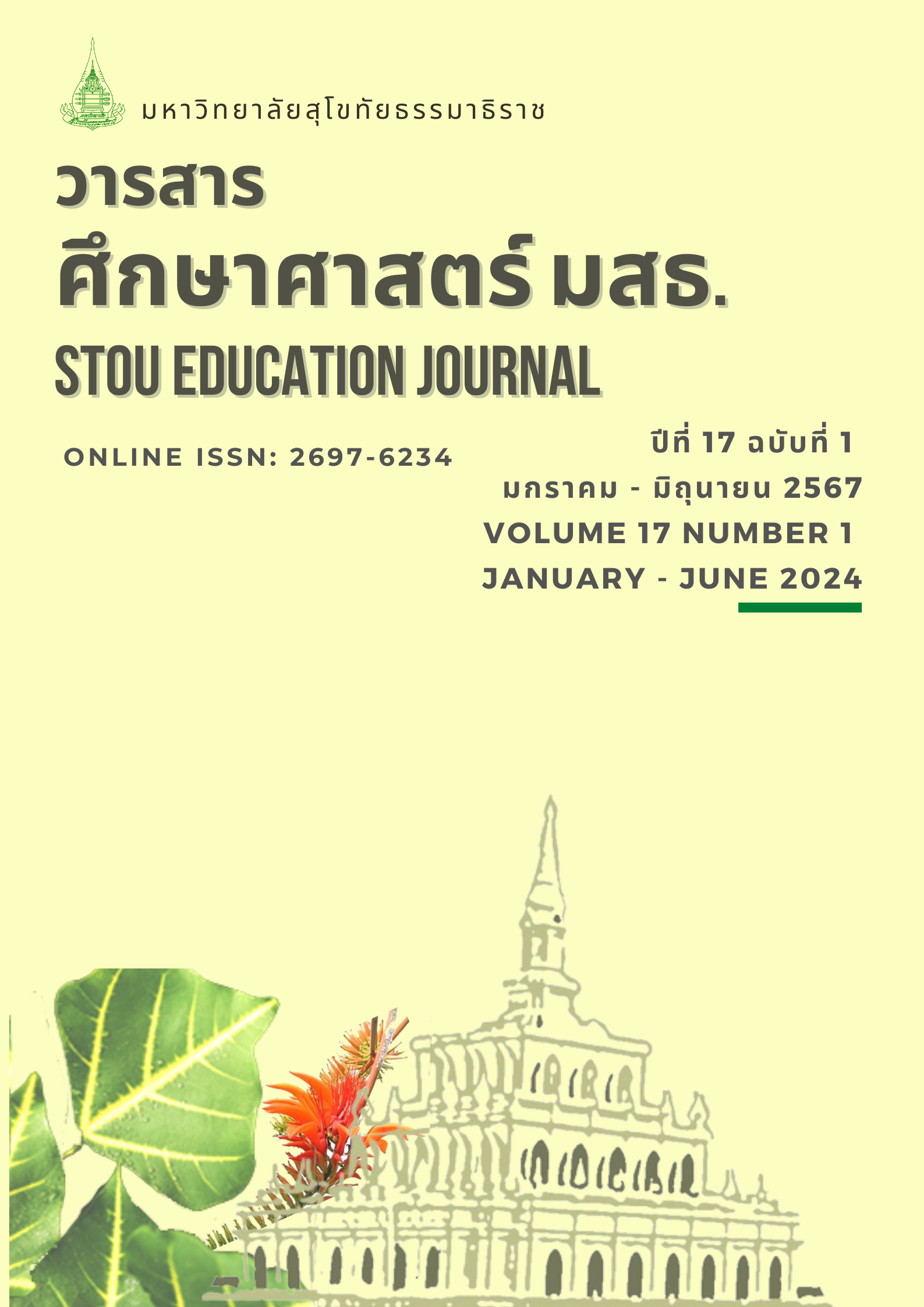Development of an Activity Learning Model via Online System by Using Supported Instructional Technology for Graduate Students at Sukhothai Thammathirat Open University
Main Article Content
Abstract
This research and development study with the following objectives: (1) to develop an activity learning model via online system by using supported instructional technology for graduate students at Sukhothai Thammathirat Open University; (2) to verify quality of the model; (3) to study the learning achievement of students who learned from the model; and (4) to study opinions of students who learned from the model. This research comprised four phases. The first phase was a study of the needs of the students for the model by studying from 286 randomly selected students. The research tool was a questionnaire on student’s needs. The second phase was the drafting of the model as a result of the focus group discussion involving seven experts. The research tools were (1) a draft of the model, and (2) a form containing guidelines for focus group discussion. The third phase was the verification of quality of the model by three experts. The research tool was a quality verification form. The fourth phase was a study of learning achievement and opinions of 38 students obtained from cluster random sampling. The research tools were (1) two parallel forms of a learning achievement test for pre-testing and post-testing, and (2) a questionnaire on student’s opinions toward the model. Statistics employed for data analysis were the percentage, mean, standard deviation, and t-test. The research findings revealed that (1) the students had the overall needs for the model at the high level, with their highest need being that for the support on the instructional media via the online system; (2) the components of the model were the input, process, and output; (3) the experts’ opinions toward the model were at the highest appropriate level; and (4) the students’ post-learning achievement was significantly higher than their pre-learning counterpart achievement at the .05 level, and their overall opinion toward the model was at the highest level.
Article Details
References
จินตวีร์ คล้ายสังข์. (2557). รวมบทความ เรื่อง เทคโนโลยีและสื่อสารการศึกษา: นวัตกรรมการเรียนรู้แบบผสมผสาน. สำนักพิมพ์จุฬาลงกรณ์มหาวิทยาลัย.
ใจทิพย์ ณ สงขลา. (2544). การเรียนการสอนผ่านเครือข่าย เวิล์ด ไวล์ด เว็บ. จุฬาลงกรณ์มหาวิทยาลัย.
มหาวิทยาลัยสุโขทัยธรรมาธิราช. (2562). รายงานผลการดำเนินงาน การปฏิรูปมหาวิทยาลัยสุโขทัยธรรมาธิราช (เมษายน – ธันวาคม 2562). นนทบุรี.
วรางคณา โตโพธิ์ไทย. (2564). รายงานการวิจัย เรื่อง การพัฒนารูปแบบการเรียนการสอนแบบผสมผสานโดยใช้สื่อสังคม สำหรับนักศึกษาระดับบัณฑิตศึกษา สาขาวิชาศึกษาศาสตร์ มหาวิทยาลัยธรรมาธิราช. สาขาวิชาศึกษาศาสตร์ มหาวิทยาลัยสุโขทัยธรรมาธิราช.
วิจารณ์ พานิช. (2556). ครูเพื่อศิษย์สร้างห้องเรียนกลับทาง. มูลนิธิสยามกัมมาจล.
Cope, B., & Kalantzis, M. (2017). e-Learning ecologies: Principles for new learning and assessment. Routledge.
Suh, S. (2005). The effect of using guided questions and collaborative groups for complex problem solving on performance and attitude in a web-enhanced learning environment [Unpublished Doctoral Dissertation]. Florida State University.


